Contents
Billard’s Spirea is a flowering deciduous shrub of the Rosaceae family that does not lose its attractiveness throughout the warm season. Along with high decorativeness, the culture is characterized by good frost resistance and unpretentiousness; it is recommended for cultivation even in the Northern regions.

Description of Billard’s Spirea
Billard’s spirea (Spiraea billardii) is a powerful shrub that grows up to 2 m in height, some specimens reach 2,5 m. The stems are straight, grow vertically upwards, forming a lush crown in the shape of a sphere. The lower part of the shoots does not have foliage, it is lignified, ribbed, grayish-brown. Young branches are reddish, covered with dense foliage, resilient and flexible.
The leaf plates have an oblong lanceolate shape with a clearly defined central vein, the average length is 10 cm. The back side of the leaf has a bluish tint.
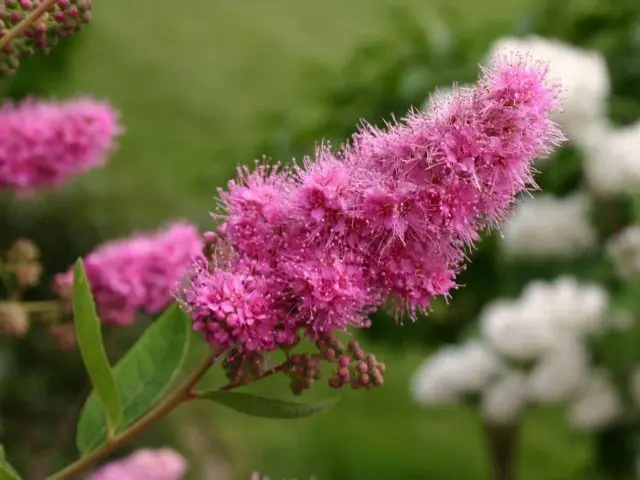
The flowering period lasts from the end of July until the first frost in October. The inflorescences are large (up to 20 cm), pyramidal, reminiscent of fluffy fragrant candles. On a long peduncle many small flowers with 5 rounded petals and long stamens are collected. The color of the inflorescences is rich pink. The most popular spirea is Billard Triumfans, blooming with raspberry panicles with an exquisite honey aroma.
Billard’s spirea (Spiraea x billardii) is a winter-hardy hybrid obtained by crossing the willow spirea (Spiraea salicifolia) and Douglas spirea (Spiraea douglasii). This variety was bred in 1854 and has since become widespread. On the territory of the Federation, Billard’s spirea is planted from the Crimea to the Arkhangelsk region.
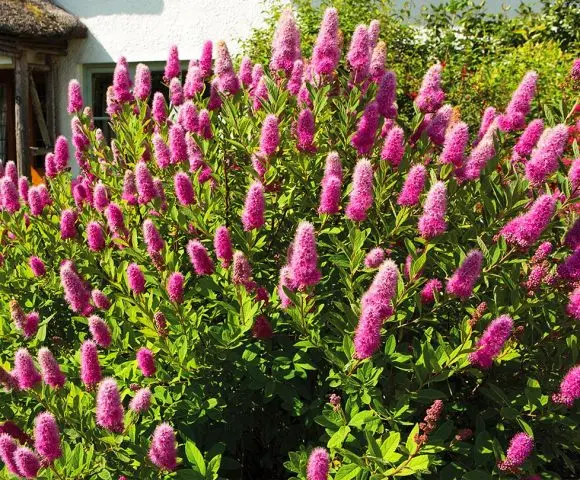
Billard’s spirea in landscape design
Billard’s spirea goes well with many plants, which is why it is so popular with landscape designers. Its neighbors can be both other flowering shrubs and conifers. Compositions with such plants look good:
- weigela;
- derain;
- viburnum;
- lilac;
- action;
- skumpia;
- willow;
- pine;
- spruce;
- juniper.
Billard’s spirea is used in the design of rockeries, mixborders, flower beds, and also as a hedge. Bushes well cover the bare trunks of large trees and tall shrubs.
Billard’s spirea can often be found in the city. The plant tolerates the gas content of the metropolis well and purifies the air, releasing phytoncides. Bushes are planted along fences, fences, walls – they bring comfort and do not lose their decorative effect even after the end of flowering. Billard’s spirea is good both in single plantings and in group plantings, where it often plays the role of the main plant.
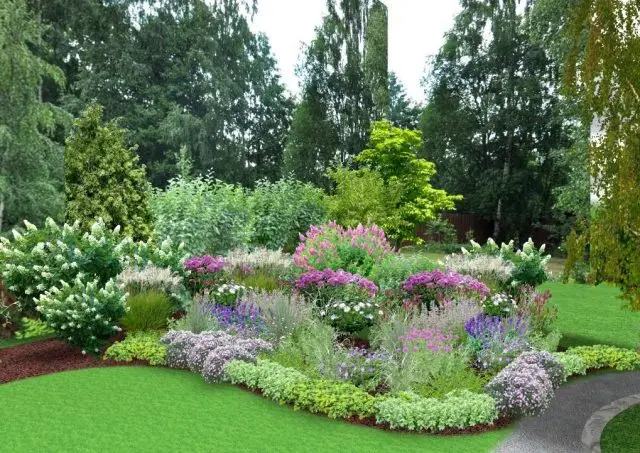
Planting and caring for Billard’s spirea
The key to success in growing Billard’s spirea is the right place, compliance with planting dates and other rules of agricultural technology. The shrub does not require special care, but always looks elegant and involuntarily attracts the attention of even those who are far from gardening.
Preparation of planting material and site
In flower centers, seedlings are sold in special containers. 1-2 hours before planting, they are watered abundantly, and removed from the tank immediately before starting work, trying to maintain the integrity of the earthen coma. Open-rooted seedlings are carefully inspected for rot and similar diseases. Damaged, dry and too long roots are removed with a clean blade, the cuts are sprinkled with crushed charcoal to reduce the risk of infection.
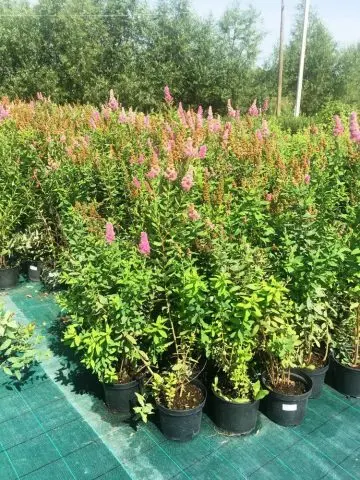
The area where Billard’s spirea will grow should be well lit by the sun. Culture can grow in the shade, however, in order to reach its full potential, it needs a lot of light. Billard’s Spirea loves rich, fertile soils with a slightly acidic or neutral pH. The soil should be loose and breathable. It is undesirable to plant spirea in areas where melt water accumulates in spring, this is detrimental to shrubs. Billard’s spirea loves moisture, but stagnant water will inevitably affect the state of the root system and the plant as a whole.
Rules for planting Billard’s spirea
Billard’s spirea is planted in spring (before bud break) and in autumn (after the bush has completely shed its foliage). It is better to choose a cloudy, but not rainy day, or to work in the evening.
The whole landing process is reduced to the following manipulations:
- They dig a hole 40 * 40 cm, at least 30 cm deep. The recess should be ⅓ larger than the earth seedling.
- Nutrient soil is prepared by mixing turf and leaf soil, peat and sand in a ratio of 2:1:1:1.
- Drainage is laid at the bottom in layers: broken brick or crushed stone, then expanded clay, sand on top.
- A layer of nutrient soil is poured onto the drainage, a seedling is placed, the rhizome is straightened, if necessary.
- Carefully fill up the remaining soil, holding the bush vertically so that the root neck is not lower than ground level.
- The earth is lightly tamped.
- The final stage of planting is abundant watering with warm settled water.

Watering and top dressing
The culture can do without watering in the event of regular rainfall. Bushes need to be watered moderately, do not flood. To preserve moisture, the near-stem circle is mulched, after loosening the ground. It is important to consider that the root system of the shrub is superficial, so loosening must be done very carefully.
In the first 2 months after planting, the plant is not fed – there are enough mineral and organic substances in the prepared nutrient soil. In the first year, the spirea needs to increase its green mass, and an infusion of mullein, bird droppings, or other fertilizer rich in nitrogen can help it with this. This top dressing is applied monthly. In subsequent years, the shrub is fertilized with a complex mineral fertilizer:
- “AgroMaster”;
- “Kemira”;
- “Azofoska”;
- “Plantafol”.
With regular fertilization of the soil, spirea can grow in one place without a transplant for 15-20 years.
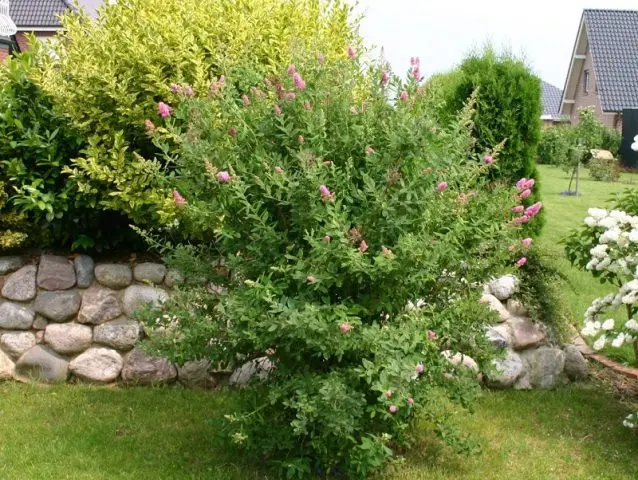
How to prune Billard’s spirea in autumn
Care for Billard’s spirea will be incomplete without regular crown pruning. This procedure is not only aesthetic, it is a good prevention against fungal diseases.
Spireas are divided into 2 types:
- spring blooming (flower buds are formed on last year’s shoots);
- summer blooming (inflorescences bloom on the shoots of the current year).
It is to the latter type that Billard’s spirea belongs, which is pruned in the fall. In the spring, the bush will begin to produce new shoots more actively, and, therefore, bloom more magnificently.
Pruning Billard’s spirea in the fall is carried out 2 weeks before the onset of frost, so that the plant has time to get stronger after the procedure. To do this, use a clean, well-ground secateurs. All old and damaged shoots are subject to removal, the tips of healthy ones are shortened, giving the bush the shape of a hemisphere.
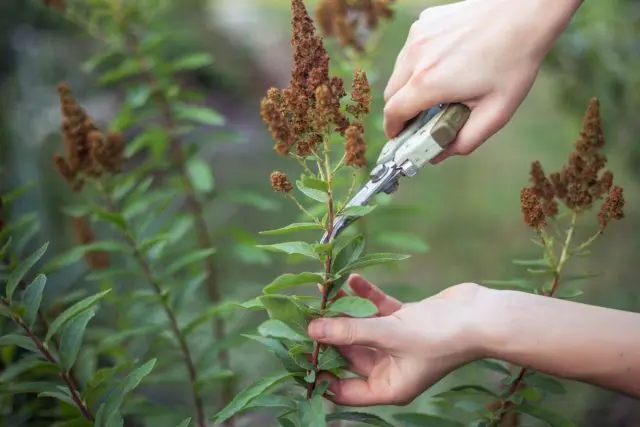
The first pruning is necessary 2 years after planting, anti-aging begins to be done after 4-5 years. To rejuvenate Billard’s spirea, all branches are shortened to a length of 30 cm, this stimulates the bush to release many new strong shoots for the next season. If the bush is badly damaged or very old, cardinal pruning is carried out at the root, leaving no stumps.
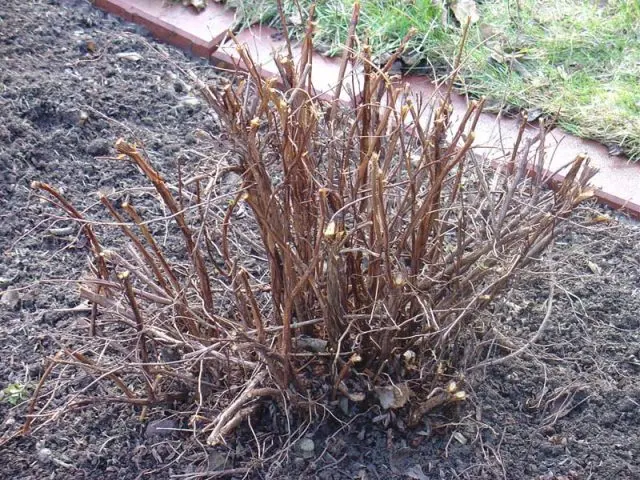
Preparation for winter
Billard’s spirea is considered a frost-resistant plant and can withstand temperatures as low as -35°C. This is possible only in the case when, immediately after the thermometer dropped below zero, heavy snow fell, which would not melt until spring. In fact, it happens differently, so the bush needs careful preparation for the cold season, especially for young seedlings with an underdeveloped root system.
In autumn, watering is reduced, the near-stem circle is freed from weeds and fallen leaves, loosened and covered with a layer of mulch at least 10 cm thick. The branches of young plants are collected in a bundle, bent to the ground and fixed with a metal bundle. A nylon mesh fence is placed around the bush to trap snow, the shoots are covered with straw.
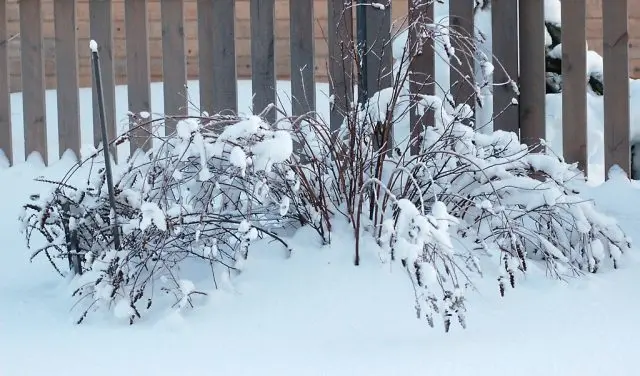
Diseases and pests
Unfortunately, Billard’s spirea is loved not only by gardeners and landscape designers, but also by insects. The most common crop pests are spider mites and aphids.
The first can be calculated by the characteristic web that envelops the leaves and stems, yellowed foliage that quickly falls off, microscopic bites and the general dejected state of the bush. Pest control comes down to spraying the ground part of the plant with an insecticide solution, for example, Karbofos or Phosphamide.
Aphids primarily affect young shoots and inflorescences, sucking out plant juices. To get rid of aphids, you can use folk remedies – soapy water, infusions of tobacco, hot pepper, ash. With a generalized lesion of the bush, insecticides are used, in particular Pirimor.
You can scare away aphids from the site if you attract beneficial insects – ladybugs. To do this, plant such plants in the garden as:
- cornflower;
- yarrow;
- calendula;
- kosmey;
- tansy;
- fennel;
- geranium.
Billard’s spirea is sometimes affected by fungal infections – various kinds of rot, which in advanced cases can lead to the death of the entire plant. For treatment, the infected bush is treated with a fungicide solution:
- “Fitosporin”
- Fundazole
- “Ditan-M 45”.
If no manipulations help, the plant is dug up and burned so that the disease does not spread to neighboring plantings.
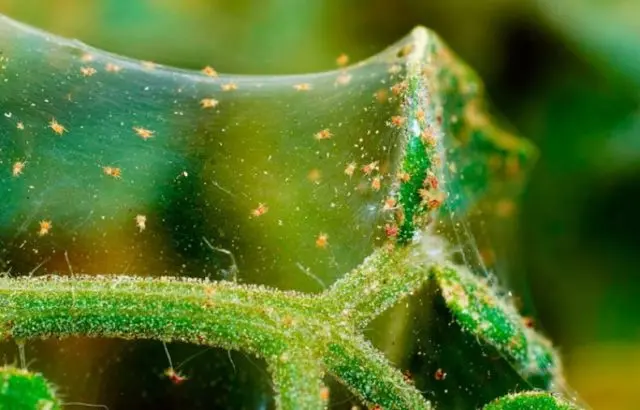
Reproduction
Billard’s spirea can only be bred vegetatively:
- division of the bush;
- layering;
- cuttings.
Seedlings of this hybrid do not inherit the qualities of the mother plant, therefore, Billard’s spirea seed propagation method is not used, the following are more often used.
Division of the bush
- Overgrown spireas are dug up in autumn before the end of leaf fall.
- The bush is dug in along the diameter of the crown, removed from the ground, shaken off the soil, the rhizome is washed with running water and allowed to dry.
- With a sharp disinfected pruner, the bush is divided into 2-3 parts so that each has a good root system and several strong shoots.
- Too long roots are shortened, and the cuts are treated with crushed coal.
- After the above manipulations, the divisions are determined to a permanent place.
Layering
- In spring, strong lignified shoots of spirea are bent to the ground and fixed with wire in the form of a hairpin in small grooves.
- The middle part of the shoot is sprinkled with nutrient soil and watered.
- The following year, the rooted layers of Billard’s spirea are cut off with a shovel from the mother bush and transplanted to a permanent place.
Cutting
- In July, strong last year’s shoots without inflorescences are cut from the bush and cut into segments of 7-10 cm, with at least 5 sheets on each.
- The cuttings are treated with Kornevin, planted in containers with nutrient soil at an angle of 30 ° and covered with a film.
- For the winter, containers with young plants are added dropwise to the garden bed and covered well.
- Next spring, Billard’s spirea seedlings will release new shoots – it’s time to transplant them into the garden.
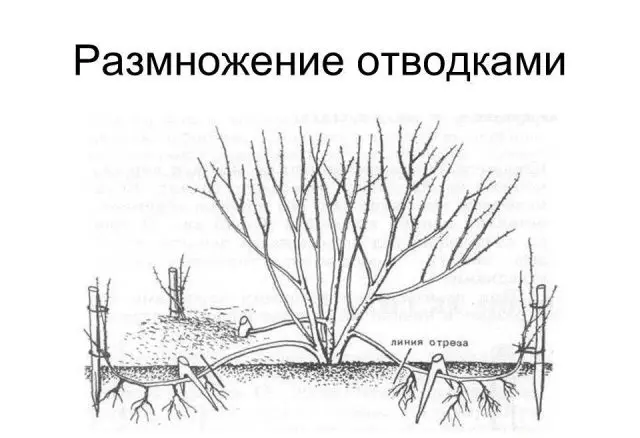
Reviews of Billard’s Spirea
Conclusion
Billard’s spirea is a successful combination of beauty and unpretentiousness. This ornamental shrub will fit into almost any garden and will become one of its main accents.









